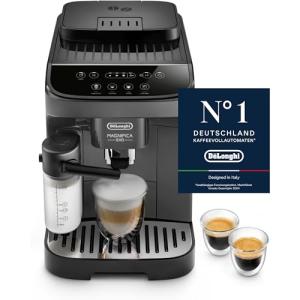Five Killer Quora Answers To Espresso Coffee Maker

The Espresso Coffee Maker: A Deep Dive into the World of Quality Coffee
Espresso, the abundant, aromatic, and vibrant coffee brewed under pressure, has become a favorite worldwide. For coffee lovers, owning an espresso coffee machine can raise their developing experience, offering a café-quality beverage right in your home. This article will explore the various types of espresso coffee machine, their features, factors to consider when purchasing one, a contrast table for popular designs, and some frequently asked concerns.
Comprehending Espresso Coffee Makers
Espresso coffee machine come in various designs, each developed to accommodate different requirements and preferences. From manual machines for perfectionists to high-tech models for those who value benefit, the landscape of espresso makers varies. Below are the primary kinds of espresso coffee makers readily available:
Types of Espresso Coffee Makers
-
Manual Espresso Makers:
- Overview: These machines require the user to be hands-on in all elements of the developing process.
- Pros: Greater control over developing parameters, more budget friendly than automated machines.
- Cons: Steeper knowing curve, more physically requiring.
-
Semi-Automatic Espresso Machines:
- Overview: These machines allow users to control the grind, tamp, and shot time while automating the brewing process.
- Pros: Balance of control and benefit, ideal for a wide variety of users.
- Cons: More costly than manual designs.
-
Automatic Espresso Machines:
- Overview: These machines take control of the developing process entirely, allowing users to choose the desired volume for a couple of shots of espresso.
- Pros: Convenient and easy to use.
- Cons: Limited control compared to semi-automatic machines; higher expense.
-
Super-Automatic Espresso Machines:
- Overview: These machines automate the whole process, from grinding the coffee beans to frothing milk for lattes or cappuccinos.
- Pros: Extremely hassle-free and time-saving.
- Cons: Often the most pricey choices.
-
Stovetop Espresso Makers (Moka Pots):
- Overview: While not “real” espresso makers, these allow amateur baristas to brew strong coffee on the stovetop.
- Pros: Affordable and portable.
- Cons: Less constant pressure; does not produce the very same crema as standard espresso.
Key Features to Consider
When looking for an Espresso Coffee Cappuccino Maker (md.entropia.de), various functions can influence a customer’s option. Here’s a list of key features to think about:
- Pressure: Look for machines that utilize a minimum of 9 bars of pressure for ideal extraction.
- Boiler Type: Single boilers, double boilers, and heat exchangers play a crucial role in temperature consistency.
- Material: Stainless steel machines frequently outperform plastic ones in durability and looks.
- Size and Capacity: Consider how much counter space is available and the number of cups you wish to brew at when.
- Relieve of Cleaning: Machines with removable parts and automatic cleansing cycles save effort and time.
- Cost: Set a budget that thinks about initial costs and long-lasting maintenance.
- Extra Functions: Look for alternatives that use steam wands for frothing milk or customizable settings for various coffee strengths.
Popular Espresso Coffee Makers
Below is a comparison table showcasing popular espresso coffee machine along with their features, prices, and client ratings.
| Model | Type | Pressure (Bars) | Boiler Type | Frothing Wand | Price (Approx.) | Consumer Rating (1-5) |
|---|---|---|---|---|---|---|
| Breville Barista Express | Semi-Automatic | 9 | Single Boiler | Yes | ₤ 600 | 4.7 |
| De’Longhi Dedica | Semi-Automatic Espresso Machine UK | 15 | Thermoblock | Yes | ₤ 300 | 4.5 |
| Gaggia Classic | Semi-Automatic | 15 | Single Boiler | Yes | ₤ 400 | 4.4 |
| Rancilio Silvia | Semi-Automatic | 9 | Single Boiler | Yes | ₤ 800 | 4.6 |
| Philips 3200 Series | Super-Automatic | 15 | Single Boiler | Yes | ₤ 900 | 4.5 |
| Moka Pot | Stovetop Maker | N/A | N/A | N/A | ₤ 40 | 4.3 |
Buying an espresso coffee machine can improve one’s coffee-drinking experience, making it not simply a day-to-day regimen, but a joyful ritual. Each of the various types deals with varying skill levels and choices, which suggests everybody can find an ideal match. With the ideal info, anyone can pick a machine that fulfills their requirements, creating the perfect cup of espresso in the house.
FAQs
1. What is the difference between espresso and regular coffee?
Espresso is brewed utilizing high pressure to force warm water through finely-ground coffee, leading to a focused shot with rich taste. Regular coffee normally uses coarser grinds and a drip method, resulting in a lighter brew.
2. Can I utilize routine coffee grounds in an espresso machine?
Technically, yes; nevertheless, the espresso machine is created for finely ground coffee. Using regular coffee premises may lead to weaker taste and insufficient pressure buildup.
3. How typically should I clean my espresso coffee machine?
Regular maintenance is important. Most professionals suggest deep cleaning every month, while day-to-day cleaning includes washing the group head, portafilter, and steam wand after each use.
4. Are espresso coffee machine worth the financial investment?
If you delight in espresso or coffee beverages that require espresso, investing in a quality Italian Espresso Machine coffee machine can save cash in the long run compared to buying coffee from coffee shops, in addition to enabling you to try out different brews.
5. What’s the perfect water temperature level for brewing espresso?
The perfect water temperature is between 190 ° F to 205 ° F (88 ° C to 96 ° C). This temperature variety optimizes taste extraction without burning the coffee.
With this extensive guide, readers can make informed decisions while exploring the world of espresso coffee makers. Embrace the art of espresso making and change your home developing experience!


